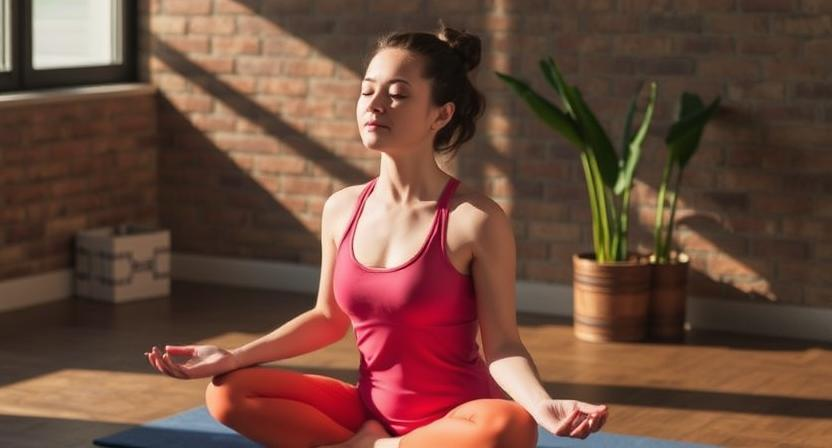In today’s world, air pollution is a growing concern. With cities becoming more densely populated, industrial activities increasing, and the climate changing, the quality of the air we breathe continues to deteriorate. According to the World Health Organization (WHO), air pollution is one of the leading environmental risk factors for global health. But there is hope! One simple, effective way to protect yourself from the harmful effects of polluted air is through breathing exercises. These exercises not only help to cleanse your lungs but also boost your immunity and overall well-being.
In this blog, we’ll explore how breathing exercises can protect your body from air pollution and why incorporating them into your daily routine is an essential practice for maintaining health.

The Impact of Air Pollution on Your Body
Air pollution is a silent threat that affects nearly every system in the body. Inhaling polluted air can trigger inflammation in the lungs, causing or exacerbating respiratory conditions such as asthma, bronchitis, and chronic obstructive pulmonary disease (COPD). It also increases the risk of cardiovascular diseases, strokes, and even lung cancer. The particulate matter found in polluted air can infiltrate the bloodstream, causing damage to tissues and organs, leading to a variety of chronic health issues.
While you can’t control the air quality outside, you can take steps to protect your body from the inside. One of the best ways to safeguard your lungs and overall health is by practicing regular breathing exercises.
How Breathing Exercises Help Combat Air Pollution
The main goal of breathing exercises is to improve the efficiency of the lungs and increase oxygen intake. They help open up the airways, improve lung capacity, and promote detoxification by increasing the flow of oxygen throughout the body. Here are several ways breathing exercises protect your body from air pollution:
- Increased Oxygenation: Regular breathing exercises enhance the flow of oxygen to your bloodstream, helping to nourish your organs and tissues. This can reduce the negative impact of the pollutants you breathe in daily.
- Strengthening Lung Function: By practicing deep breathing and controlled breaths, you can strengthen your diaphragm and lung muscles. This makes it easier for your body to expel toxins and pollutants from the respiratory system, promoting overall lung health.
- Improved Detoxification: Certain breathing exercises stimulate the lymphatic system, which plays a crucial role in detoxifying the body. As the lymphatic system moves toxins out of your body, it helps flush out the harmful particles that you may have inhaled from the polluted air.
- Stress Reduction: Polluted air can cause stress, as your body works harder to deal with the inhaled toxins. Breathing exercises are a powerful tool for reducing stress, calming the nervous system, and helping you feel more centered.
- Boosting Immunity: Proper breathing exercises can enhance the function of your immune system by increasing the production of white blood cells, which help fight infections. A strong immune system is crucial when you are exposed to environmental pollutants.
Simple Breathing Exercises You Can Do Anywhere
Even if you live in a city with high levels of pollution, you can protect your body with simple breathing exercises. Here are a few you can incorporate into your daily routine:
1. Diaphragmatic Breathing (Belly Breathing)
This technique involves breathing deeply into your diaphragm, rather than shallow breathing into your chest. Diaphragmatic breathing helps strengthen the diaphragm and encourages full lung expansion.
How to do it:
- Sit or lie down in a comfortable position.
- Place one hand on your chest and the other on your belly.
- Inhale deeply through your nose, allowing your belly to rise (the chest should remain still).
- Exhale slowly through your mouth, allowing your belly to fall.
- Repeat for 5-10 minutes.
2. Alternate Nostril Breathing (Nadi Shodhana)
Alternate nostril breathing is a powerful breathing exercise that helps balance your mind, reduce stress, and purify the respiratory system. It is especially beneficial in combating the effects of air pollution by promoting deep, clean breaths.
How to do it:
- Sit comfortably with your spine straight.
- Close your right nostril using your right thumb.
- Inhale deeply through your left nostril.
- Close your left nostril using your right ring finger and release your right nostril.
- Exhale through your right nostril.
- Inhale through your right nostril.
- Close your right nostril and exhale through your left nostril.
- Continue for 5-10 minutes.
3. Box Breathing (Square Breathing)
Box breathing helps with stress management and mental clarity. This breathing exercise can be a great way to reset and refocus while also promoting healthy lung function.
How to do it:
- Sit comfortably with your back straight.
- Inhale through your nose for 4 counts.
- Hold your breath for 4 counts.
- Exhale slowly through your mouth for 4 counts.
- Hold your breath again for 4 counts.
- Repeat for 5-10 minutes.
Motivation to Exercise and Practice Breathing Exercises
We all know that regular physical exercise plays a significant role in improving overall health. It helps reduce stress, improves cardiovascular health, and enhances lung capacity. However, many people overlook the importance of breathing exercises as a complementary practice to physical exercise. The truth is, they can amplify the benefits of your workouts and protect your body from the negative effects of air pollution.
You don’t have to make breathing exercises feel like a chore. Start by dedicating just 5-10 minutes a day, and gradually increase the time as you become more comfortable. Set a goal to practice them every morning or before you go to bed. Incorporating them into your routine will not only help protect you from the damage caused by polluted air, but it will also improve your overall mental and physical health.
If you need a little extra push, seek motivation from reliable resources, like Top Health Coach. This website offers a wealth of health-related advice, tips, and strategies to help you stay on track and motivated to exercise and take care of your body.
Conclusion
Air pollution is an ongoing issue, but with the right practices, you can protect your body from its harmful effects. By incorporating breathing exercises into your daily routine, you can increase your lung capacity, enhance detoxification, and reduce the impact of pollutants on your health. These exercises are simple, effective, and can be done anywhere, making them a convenient solution for anyone looking to improve their well-being. Stay motivated, breathe deeply, and take control of your health, no matter what the air quality outside is like!
For more health and fitness tips, visit Top Health Coach and explore expert advice on how to lead a healthier, pollution-free life.



